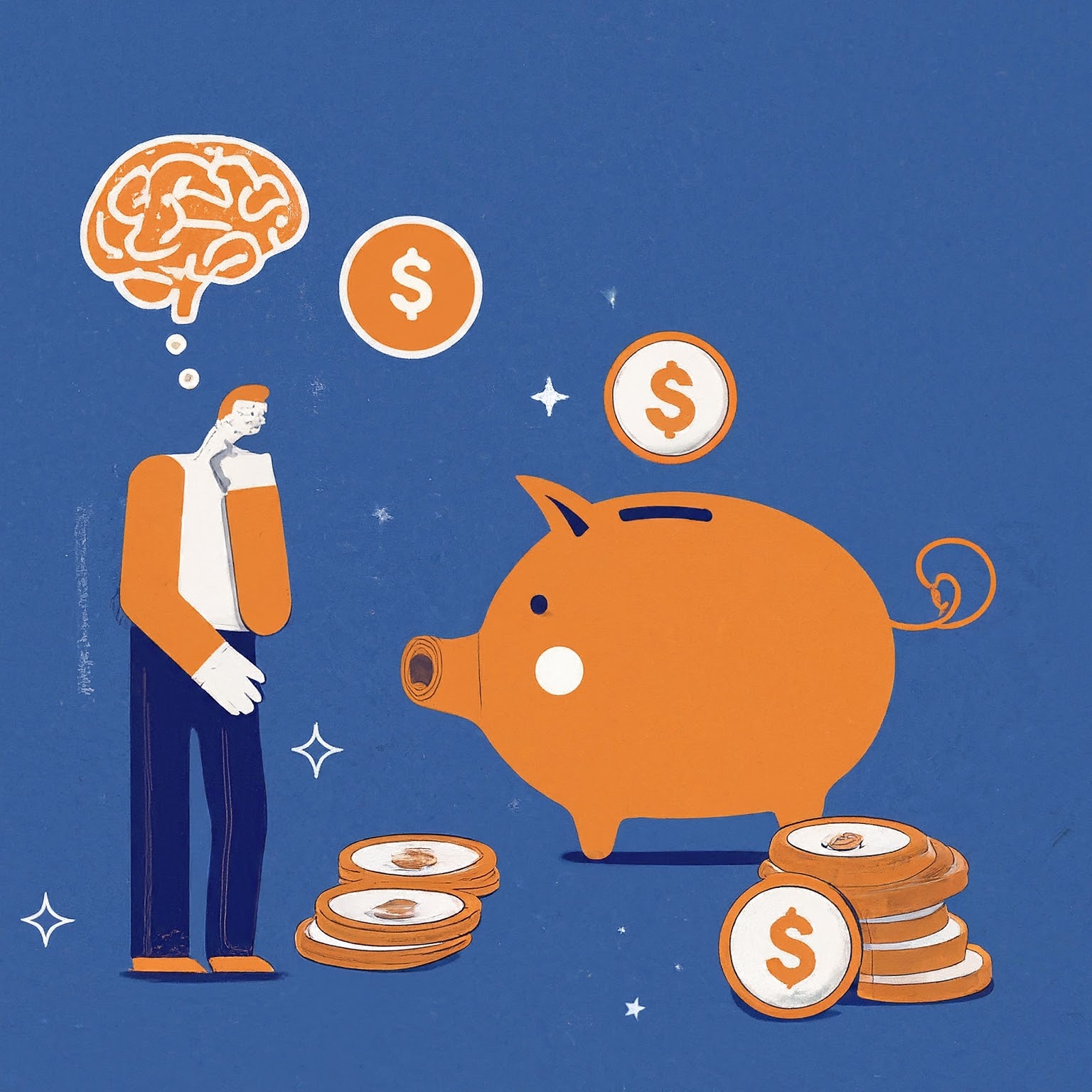Why You Need To Have Multiple Bank Accounts
Having just one account also puts all your...
August 31, 2024

Have you ever found yourself standing in line at the checkout, wallet in hand, and a sudden pang of doubt hits you? Or perhaps you’ve been at the other end, meticulously adding to your savings, but feeling like you’re missing out on the joys of today.
Whether you’re a fresh-faced college graduate or someone who’s seen a few more seasons, the way we interact with money can be a rollercoaster of emotions and decisions.
In this article, ‘The Psychology of Spending and Saving,’ we’re diving into the invisible forces that tug at our purse strings. We’ll explore why we often act against our own financial interests and how we can rewrite the script for a healthier bank balance.
It’s not just about numbers and budgets; it’s about understanding the whispers of your mind that say “buy” when you should “bye” and “save” when you might want to savor.
So, whether you’re looking to curb your spending habits or boost your savings account, this read is your ticket to a more empowered financial future.
Let’s unlock the secrets behind the psychology of spending and saving, and transform that knowledge into tangible, positive change in your life. No fluff, just the good stuff – let’s get started.
We all have an internal dialogue when it comes to money, shaped by our upbringing, experiences, and beliefs. These “money scripts” act as invisible scripts that guide our financial behaviors, often without us realizing it.
Money scripts fall into four main categories: avoidance, worship, status, and vigilance. Those with an avoidance script view money as a source of fear or anxiety, often leading to underspending and a scarcity mindset.
On the other hand, those who worship money may prioritize wealth above all else, sometimes at the expense of other life domains. The status script associates self-worth with net worth, driving overspending to maintain a certain lifestyle.
Finally, the vigilance script promotes frugality and careful money management, but can veer into excessive penny-pinching.
Recognizing your dominant money script is the first step towards rewriting harmful narratives and fostering a healthier relationship with your finances.
Even with the best intentions, our decision-making can be skewed by cognitive biases – systematic patterns of thinking that deviate from rational judgment. Two biases particularly relevant to financial choices are present bias and loss aversion.
Present bias refers to our tendency to prioritize immediate gratification over long-term rewards. It’s the reason we might splurge on a night out instead of contributing to our retirement fund.
This bias can hinder our ability to save for the future, as the rewards seem too distant to motivate us.
Loss aversion, on the other hand, describes our inclination to avoid losses more strongly than we pursue gains. This bias can make us overly risk-averse when it comes to investing, causing us to miss out on potential growth opportunities. It can also lead to holding onto losing investments for too long, in the hope of breaking even.
Recognizing these biases is crucial for making more rational financial choices and avoiding costly mistakes.
Have you ever treated yourself to a fancy purchase after a tough day at work or a breakup? That’s emotional spending at play – using retail therapy to cope with negative emotions or celebrate positive ones.
Common emotional triggers for spending include stress, sadness, boredom, excitement, and even happiness. When we experience these heightened emotional states, our self-control can weaken, and we may turn to spending as a way to regulate our emotions or reward ourselves.
While an occasional indulgence is perfectly fine, emotional spending can quickly spiral into a habit that derails our financial goals.
The key is to recognize these emotional triggers and develop healthier coping mechanisms, such as exercise, journaling, or simply taking a breather before making a purchase.
In today’s digital age, the temptation to spend is never more than a few taps away. Online shopping platforms, targeted advertising, and social media influencers can all contribute to impulse buying and overspending.
The convenience and accessibility of online shopping can make it easier to rationalize purchases, especially when combined with tactics like limited-time offers and scarcity messaging. Additionally, the dopamine hit we get from making a purchase can reinforce this behavior, creating a cycle of overspending.
To combat the influence of technology on our spending habits, we can limit our exposure to digital marketing, unsubscribe from promotional emails, and be mindful of the psychological tactics employed by retailers.
Setting boundaries, such as disabling one-click purchases or taking a cooling-off period before making online purchases, can also help curb impulse buying.
While understanding the psychology behind our spending is crucial, it’s only half the battle. To truly take control of our finances, we need to adopt strategies that encourage saving and foster positive behavioral change.
One powerful technique is “paying yourself first” – automatically transferring a portion of your income into a dedicated savings account before you have a chance to spend it. This approach leverages the power of inertia and makes saving a habit, rather than an afterthought.
Setting clear financial goals can also motivate saving behavior by providing a tangible target to work towards. Whether it’s saving for a down payment, a dream vacation, or retirement, having a specific goal in mind can help you stay focused and make sacrifices more palatable.
Additionally, reframing your mindset around saving can be transformative. Instead of viewing it as deprivation, consider it as an investment in your future self – a gift that keeps on giving in the form of financial security and peace of mind.
While our money scripts are deeply ingrained, they are not set in stone. With conscious effort and a growth mindset, we can challenge and rewrite the narratives that hold us back from achieving financial well-being.
Start by identifying your dominant money script and its origins. Was it shaped by your parents’ attitudes towards money? A past financial setback? Once you understand the root of your beliefs, you can begin to question their validity and replace them with more empowering narratives.
For example, if you have an avoidance script that associates money with fear, you could reframe it as a tool for security and freedom. If you have a status script that equates self-worth with net worth, you could remind yourself that true fulfillment comes from within, not material possessions.
Surrounding yourself with positive financial role models and seeking out educational resources can also help reinforce these new money scripts and keep you motivated on your journey towards financial wellness.
The psychology of spending and saving is a complex interplay of emotions, beliefs, and cognitive biases. By understanding these invisible forces, we can gain greater control over our financial decisions and align our actions with our long-term goals.
Remember, it’s not just about numbers and budgets; it’s about rewriting the scripts that have held you back and fostering a healthier, more empowered relationship with money. Whether you’re looking to curb your spending habits or boost your savings account, the insights and strategies shared in this article can be your guide to a more financially secure and fulfilling life.
So, take the first step today. Examine your money scripts, challenge your cognitive biases, and embrace strategies that encourage saving and positive behavioral change. The road to financial well-being starts with understanding the psychology behind your spending and saving choices.

Having just one account also puts all your...
Setting goals is one thing, sticking to them...
Savings can help you handle unexpected expenses, achieve...